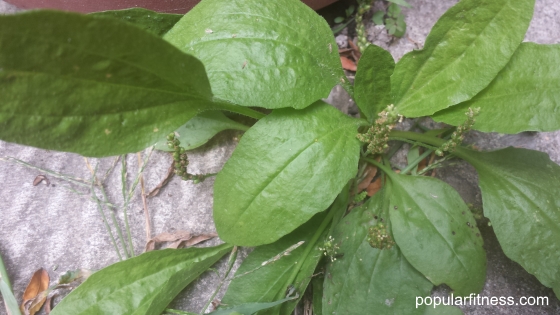
The common plantain (plantago major) is an excellent and very effective plant for treating wasp and bee stings as well as mosquito bites. It’s often referred to as a weed but it’s actually a very good medicinal plant as well as a leafy green edible plant that is high in calcium and vitamins A, C, and K. It’s found everywhere and I mean everywhere - in gardens, sidewallk cracks, in patio stone cracks, amongst grass. Anywhere there is a little bit of soil or space, it will grow, so it is easily and readily available to find and to use no matter where you are if you happen to get stung by a bee or wasp. Plus it’s absolutely free, the cheapest way of treating stings fast and effectively.
How to Use
After being stung, first remove the stinger. Next take a couple of clean leaves of plantain and either chew on them or crush them with your fingers to release the juices. Apply the crushed plantain to the area where you were stung. Try to apply as much as you can as it will work better and in this way, you will know that you got the area that was stung well-covered. Let the covered area dry out a bit.
After applying the juices from the leaves of the plantain to the sting, it will immediately soothe the pain and reduce the swelling, itching and redness. It works by drawing out the toxins from the sting or at least neutralizing the effect of the toxins. Surprisingly, it works very fast.
If you need to, repeat the application process again.
Since wasps are basically dirty insects (they land on basically everything) and wasp stings may in some cases lead to infections, the common plantain also helps to prevent any infections from occurring.
There are of course other natural ways to treat stings with natural remedies like with apple cider vinegar but I find that it does not work as fast and as effectively as plantain and you need to reapply many, many times.